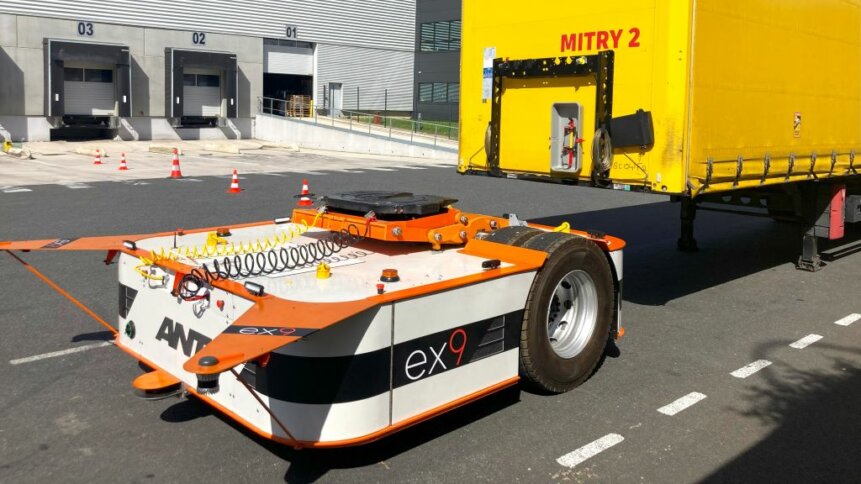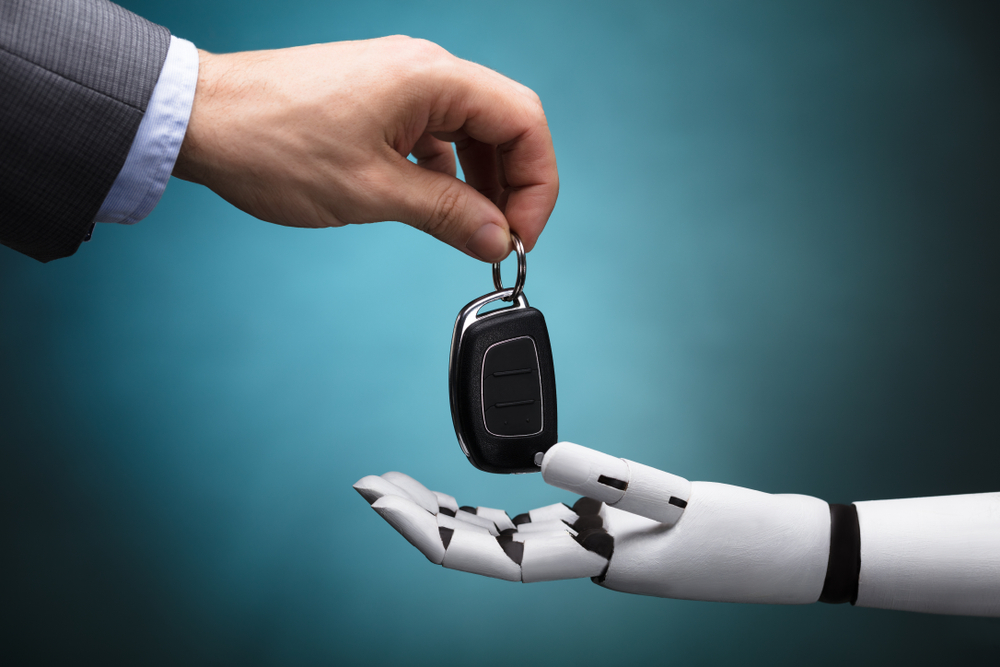Transforming supply chains: an autonomous vehicle success story

|
Getting your Trinity Audio player ready...
|
• Autonomous vehicles are transforming supply chains in a number of ways.
• They also have potential to maximize urban car parking space and valet parking.
• While these may not be Blade Runner applications of autonomy, they can have a huge impact.
Leading self-driving car developers may be facing roadblocks in ramping up their urban operations, but vehicle automation is racing ahead in other settings. For example, cost-effective and eco-friendly tow robots are helping to transform supply chains through improved yard transport operations.
Having trialed the supply chain tech with DHL France in 2023, Unmanned-Transport-as-a-Service provider ex9 – a startup based in Évry, a short drive south of Paris – is making its fleet of autonomous electric shunting robots available globally.
Tow robots – transforming supply chains
The firm’s tow robots, designed to alleviate congestion and delays at logistics hubs, slide under road transport trailers to replace human-driven cabs.
In 2023, the International Road Transport Union (IRU) forecast that driver shortages could double in five years. “An aging population – particularly in Europe and the United States where less than 13% of workers are under 25 – partially explains driver shortages, suggesting that the available pool of national workers may not be enough to cover the gap,” writes the IRU.
Tow robots can automate the common tasks of shunting operators and drivers thanks to a software stack tailored for industrial use and logistics maneuvers. Perception, localization, dynamic control, and path routing are supported by a sensor kit fitted to the autonomous robot tractors.
Ex9 claims that automation can increase the rate of pre-loading and so-called “drop & hook” shunting operations, while reducing costs and lowering the risk of accidents. What’s more, being battery-powered, the self-driving freight technology helps to drive down the emission of diesel fumes at the depot – both by shuttling trailers back and forth using electric power and by cutting waiting times, reducing the amount of diesel engine idling by incoming and outgoing trucks.
Trendsetting container transport
Tow robots for streamlining road freight operations are another check in transforming supply chains. Progress happening elsewhere includes fully automated port operations – such as the Port of Long Beach, US – where autonomous vehicles can be seen shuttling containers on the harbourside.
Sea freight is critical to reducing supply chain emissions, with some shipping operators investigating the use of hi-tech sails. Vessels can be in and out of the harbor in as little as 48 hours, which is a major triumph of terminal operating systems. Unloaded containers from a single cargo ship could stretch as far as 70 miles if placed end-to-end.
Using Automated Rail Mounted Gantry cranes, @PatrickTerminal – Sydney Autostrad achieved a global-first full automation of container transport between yard and rail wagon. Powered by our drives and #automation tech, the cranes increase efficiency, sustainability, and safety! 🌟 pic.twitter.com/nKWwMeW8fa
— Siemens Aus & NZ (@Siemens_Aus) October 5, 2023
So far, so good, but what about bad weather? Supply chain delays can propagate quickly, and self-driving systems need to be resilient. What happens to wheel-based odometry when tyres slip in damp conditions? A coastal climate of heavy rain, fog, and sea spray could obscure camera images. Fortunately, there’s no need to panic – at least if you’re using radar-based localization systems, which have no such limitations in keeping autonomous vehicles on the right path.
Besides container-carrying self-driving vehicles, other port machinery, such as rubber-tyred gantry cranes and ship-to-shore lifting equipment, can also benefit from the 360-degree all-weather sensors. Navtech – a developer and manufacturer of industrial-grade radar – boasts that sensors operate reliably in rain, fog, dust, dirt, and in all light conditions, including complete darkness.
Use cases beyond transforming supply chains
On TechHQ we’ve written about how other advances – such as quantum computing – can be brought into play, further transforming supply chains. And being able to stack and retrieve large items efficiently has applications beyond optimizing container shipping and improving throughput at logistics hubs.
A growing application for self-driving vehicle robots is automated parking for cars and even bicycles. Parking space is tight in many cities across the globe, and stacking vehicles vertically is attracting interest from industrial automation experts such as Japanese firm GIKEN (see YouTube clip).
In fact, there are a number of providers worldwide working on automated vehicle parking projects, including Stanley Robotics, which has shown how airport parking can be transformed. In this case, a low-riding robotic platform slips under the vehicle and gently raises the car or light truck by an inch or so, using anchors alongside each wheel.
Robots can pack vehicles much more tightly than human drivers to maximize available parking space. They also simplify what can be a dull and repetitive task for human drivers – which is where automation really comes into its own. Valet parking at hotels is another related use case.
Stanley Robotics claims that self-driving parking robots can increase parking capacity by 50%. They also remove a pain point for customers and make parking, in the firm’s words, hassle-free.

Robo-parking – saving space, reducing risk.
A key component in all of these autonomous vehicle success stories is that the self-driving element is something that combines with a regular vehicle to perform a well-described and predictable task. In the case of tow robots, it’s shunting a trailer to and from its yard slot. And for parking systems, it’s storing and fetching vehicles.
Also, in all the scenarios we’ve discussed, the environment is well-controlled. Port access is restricted, and likewise for logistics hubs and robot-operated parking facilities. Self-driving algorithms can be better protected from surprises than they can, for example, on the open road or in unpredictable urban settings. There are security gains too – tightly packed vehicles are not easy for thieves to get into and drive away (setting aside cybersecurity threats).
People may be disappointed not to find self-driving taxis whizzing effortlessly around their city. But that’s not to say that autonomous vehicles aren’t making an impact.
Parking promises to be more available and less tedious for drivers. And in deployments that may be less visible to consumers, autonomous vehicles are transforming supply chains.









